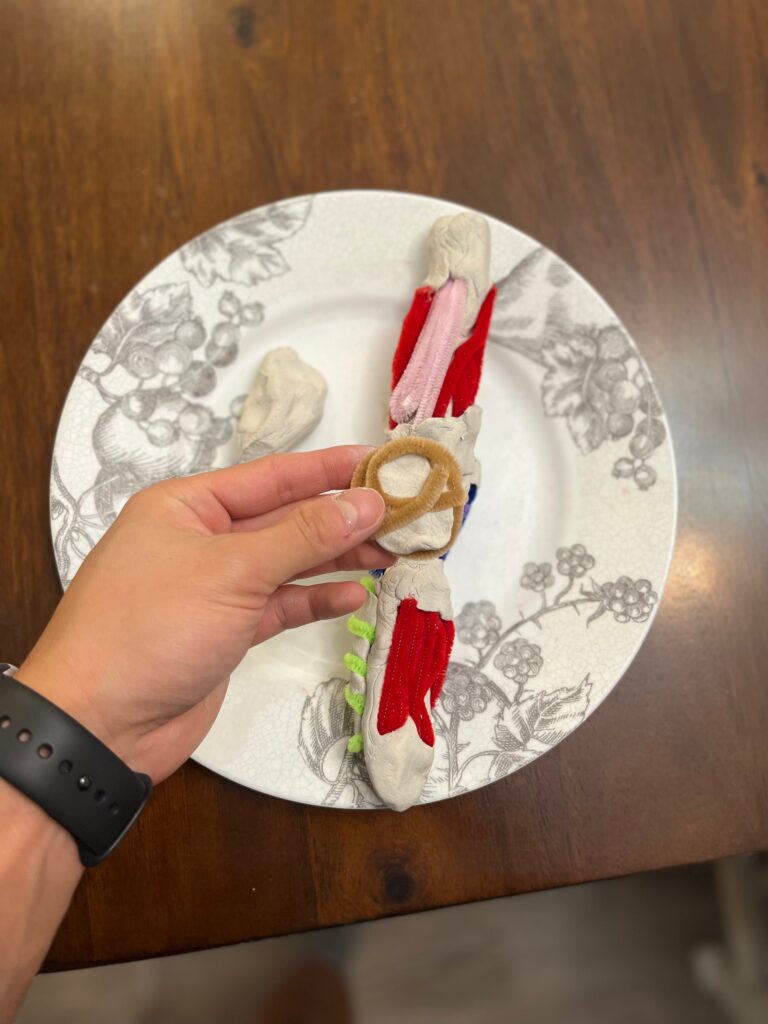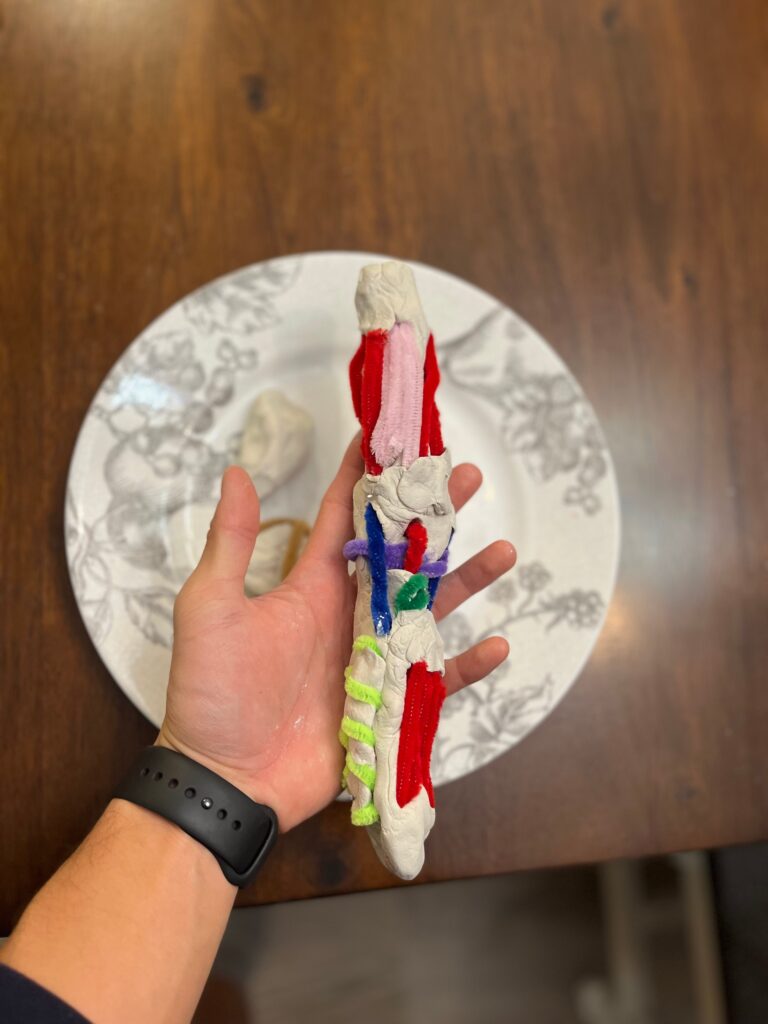Topic: Tennis athletes bone/muscle structure changing relative to non-tennis athletes
Objective: Relate the interaction of muscles and the skeletal system
Written Statement:
Tennis athletes are consistently causing forces that impact the bones along with different lower body muscle groups. This is especially for the knees and the muscles that are consistently in movement. These could include movements of bouncing, sprinting, or even hopping (Ireland Et al., 2014). Over time we notice this being a significant factor for bone composition in those starting earlier than later. A previous study determined that tennis players who started earlier in life compared to masters (above 30 years old) showed a significant difference in their bone densities (Ireland Et al., 2014; Piasecki Et al., 2019). Every decade research has shown that approximately 8-10% of bone decays after the ages of 30 years and beyond.
With gradual changes to bone density, it does not specifically target bone mineral density in adolescents. A study shown for female adolescents showed an increase for female tennis players compared to non-tennis players, prominently measuring the lumbar spine, total hip, femoral neck, forearms bone mineral density, and body composition (Ermin Et al., 2012). All of these results leading to show that from any age till the age of 70 showed or lower body fat percentage and higher lean mass, compared to those who did not exercise (Piasecki Et al., 2019).
Muscle was a big contributing factor to the development of a tennis athlete as well. Over the course of long-term tennis playing athletes there seemed to be significant growth in the impact being faced leading to these athletes having much larger muscle density relative to the nonathletes and this was prominent for the men and women as well. With these results, researchers were able to determine that the groups for muscle function would have 17% less body fat compared to the groups who did not exercise and their muscle would also be greater by 12 percent with an overall, not showing much of a difference in the general body mass between the groups (Piasecki Et al., 2019).
When looking at my artwork I wanted to make a clear connection on how tennis athletes, utilize their muscles. Showing the fibers along with the skeletal structure working together. To create an emphasis on how these muscles are divided into different colors of pipe cleaners attached to the clay being the skeletal structure, it allowed showing the distinctive parts being divided up as well. Over time the researchers can identify the high-velocity eccentric contractions (Ireland A. Et al.) to create much stronger bone strength. With the clay being a lighter color it was able to contrast against the bright colors of the pipe cleaners. I also wanted to emphasize how important it is to continuously exercise from any age group as it could help against bone degradation. With that being said I would also emphasize the lower body more than the upper body since many continuous movements occur at the base. This sport has also been extremely accessible to the older and younger populations for socially distanced exercises, sparking my idea for this project. I also gathered inspiration from myself in my photos when I play the sport that lead to my observation of “leaner legs and lower body fat” on myself.
Art design concept:
I used air-dry clay since regular clay didn’t let me put the pipe cleaners in the tighter spots of the project.


Inspiration of art model:
Citations: Et al.
Huddleston, A. L., Rockwell, D., Kulund, D. N., & Harrison, R. B. (1980, September 5). Bone Mass in lifetime tennis athletes. JAMA. Retrieved November 23, 2021, from https://pubmed.ncbi.nlm.nih.gov/7411762/.
Ducher, G., Courteix, D., Même, S., Magni, C., Benhamou, C. L., & Viala, J. F. (2005, August 15). Bone geometry in response to long-term tennis playing and its relationship with muscle volume: A quantitative magnetic resonance imaging study in tennis players. Elsevier. Retrieved November 23, 2021, from http://biomechanics.stanford.edu/me337_10/projects/ducher05.pdf.
Krahl, H., Michaelis, U., Pieper, H.-G., Quack, G., & Montag, M. (1994). Stimulation of Bone Growth Through Sports: A Radiologic Investigation of the Upper Extremities in Professional Tennis Players. The American Journal of sports medicine. Retrieved November 23, 2021, from http://europepmc.org/article/MED/7856798.
Ermin, K., Owens, S., Ford, M. A., & Bass, M. (2012). Bone Mineral Density of Adolescent Female Tennis Players and Nontennis Players. Journal of osteoporosis. Retrieved November 23, 2021, from https://www.ncbi.nlm.nih.gov/pmc/articles/PMC3395175/.
Ireland, A., Degens, H., Ganse, B., Maden-Wilkinson, T. M., Wilks, D. C., & Rittweger, J. (2015, May 28). Greater tibial bone strength in male tennis players than controls in the absence of greater muscle output. Journal of Orthopaedic Translation. Retrieved November 23, 2021, from https://www.sciencedirect.com/science/article/pii/S2214031X15000364.
Piasecki, J., Ireland, A., Piasecki, M., Deere, K., Hannam, K., Tobias, J., & McPhee, J. S. (1AD, January 1). Comparison of muscle function, bone mineral density and body composition of early starting and later starting older masters athletes. Frontiers. Retrieved November 23, 2021, from https://www.frontiersin.org/articles/10.3389/fphys.2019.01050/full.

Chris wrote his STEAM project on the bone of tennis athletes. His media was an art piece designed from pipe cleaners and clay. The clay is used to represent the bones involved and the pipe cleaners stand-in for the muscles. The art focuses specifically on the knee joint and how the skeletal structure and muscles interact with each other. He wanted the art piece to have the muscles be differentiable one from another so different colored pipe cleaners were used. The essay is a compilation of research done on tennis athletes verse non-athletes. The research was focused on the changes to the density of their bones. Tennis athletes have denser bone structures especially in the leg bones than non-athletes. This is the result of the physical requirements of playing tennis such as jumping running and hopping. It is more prominent in athletes that started when they were younger compared to those who started when they were mid-age around 30. The bones in the athletes aren’t the only thing effect by the exercise done by players. The muscles that connect to the skeletal system also become denser over time. This helps with the stabilization of the knee. The body fat of the athletes was lower as well by 12% different. The research was not limited to a specific age range or gender. The research was thoroughly thought through on creating an inclusive range for different types of people while still maintaining the requirement of being a tennis player. This research also spanned over multiple years. Overall tennis players have denser bones and muscles when compared to non-athletes.